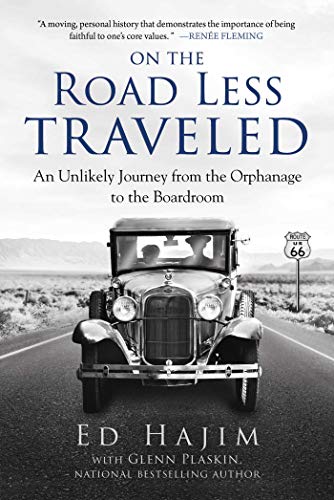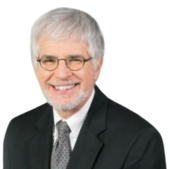
In one of my recent contributions to Corporate Learning Network, I explored ‘7 Key Insights on Leading and Learning from Leader to Leader 100.’ That Spring 2021 issue marked a milestone of 100 issues published in 25 years; and also 10 years for me as managing editor. In this post, I’m drawing attention to takeaways/insights from our most recently published issue, #101 (Summer 2021):
Leadership prioritization: not everything is urgent
Heather Anderson, chief executive (CEO) of Global Health Corps (GHC) details her experience leading her organization during the time of COVID-19 in her article “Redefining Urgency: Social Impact Leadership and Dynamic Resilience.” She notes six points about the resilience journey for her and her organization during this time: (1) tap into the power of imagination, (2) prioritize connection and reflection, (3) show vulnerability, (4) model and codify self-care, (5) redefine urgency, and (6) let your values guide you.
Debunking leadership myths
Hubert Joly served for eight years as chief executive officer, and later executive chairman, of Best Buy. He is currently a senior lecturer at Harvard Business School. In his article “The Case for Purposeful Leadership,” he dispels three leadership myths. In his words, they are: Myth #1: Leaders are superheroes. Myth # 2: People are born leaders. Myth #3: You cannot change. “Rethinking how we lead,” Joly contends, “is essential if we are to make purpose and human connections the heart of business.”
A learning journey for your entire organization
Ekpedeme “Pamay” M. Bassey is CLO/Chief Learning Officer and Chief Diversity Officer of The Kraft Heinz Company. In her article “365 Days of Learning: Embracing Learning As A Superpower,” she describes her corporate role as follows: “First, I drive the company’s global training and learning strategy, programs and initiatives, and second, I drive a culture of continuous learning, bold creativity and intellectual curiosity.” Furthermore, leaders should be continuous learning role models: “Taking time to learn does not get in the way of leaders reaching targets, making strategies come to life and delivering results. It is the way.”
CEOs need strong executive teams
Ian C. Read, in his article “Formed in the Crucible of Crisis: My Approach and Insights on Leading Pfizer’s Executive Leadership Team,” writes about his corporate turnaround experience during his years as CEO/Chief Executive Officer of Pfizer. He focuses on working with the company’s Executive Leadership Team (ELT), based on the following four principles, which in his words are #1: Build trust on the ELT. #2: Align on a fully shared view of the strategic business challenge and needed actions, uniting the ELT. #3: Link the business challenge to needed culture change. #4: Keep the ELT focused on enterprise-level decisions and true cross-divisional collaboration opportunities.
Read, who later became executive chairman, had organizational longevity at one company that is becoming increasingly rare: 41 years at Pfizer.
Distilling leadership into the four Ps
In his article “The Four Ps: A Simple Tool For Making Better Leadership Decisions,” Ed Hajim, the former chairman and CEO of Wall Street company Furman Selz, who has also held leadership positions in higher education and elsewhere, offers and elaborates on a simple formula for leadership, developed over his lifetime: “… a methodology for talking to yourself, your family and your business associates.”
In Hajim’s words, the deceptively simple points are, in his words: find your passions, find your principles, find your partners, and find your plans. The article is adapted from his recent memoir On the Road Less Traveled: An Unlikely Journey from the Orphanage to Boardroom, which details an amazing life story: from foster homes and orphanages to Wall Street and roles such as president of the Harvard Business School Alumni Association and Chairman of the Board of Trustees of the University of Rochester.
Distilling ethics into the 3-Ps
The subject of ethics will not lose its importance as long as human beings walk the earth. In his article “Ethical Decision-Making: Getting Better at Doing Right,” James K. Dittmar, president of the 3Rivers Leadership Institute and founder and director of the M.S. in organizational leadership program at Geneva College, has his own 3-Ps, unrelated to those of Ed Hajim, above. They are Process, Perspective, and Person. “The phrase moral agent,” Dittmar writes within P for Person, “refers to your capacity and ability to act morally or ethically. In this case, you take a hard look into the mirror and ask, Am I able and willing to live out my moral values?”
Becoming an antiracist leader
If you are looking for insights into why so many corporate diversity and inclusion programs haven’t been as effective as they should be, some answers can be found in “How to Be An Antiracist Leader,” the article by Michelle Silverthorn, founder & CEO of Inclusion Nation. “Throughout 2020 and into 2021,” she writes, “Black employees in companies were asked to take on entirely new roles, ones they were not compensated for and for which there would be no promotion awaiting them at the end.” In the conclusion, she expresses that it “takes courage to share stories of those who know if they speak up for themselves, the retaliation will be fierce and uncompromising. It takes courage to know that it could happen to you too. If you want to transform your workplace for good, I hope you find that courage.”
Smart workplace coaching approaches
Coaching remains one of the hottest topics inside and outside of today’s organizations. Meredith Bell, co-founder and President of Performance Support Systems, a global software company, contends in her article “Leaders Coaching Leaders: A Cost-Effective Solution for Skill Development,” that “companies often hire executive coaches for top-level leaders. But these services are expensive, so it’s not practical to invest in them for all levels of leadership. The answer is peer coaching—leaders coaching leaders.” As she notes in her conclusion: “For organizations committed to improving how leaders communicate with others, a leader-to-leader peer coaching program is a realistic way to make sure new skills become permanent habits.”
Strategic pivots in the COVID-19 era
Gleb Tsipursky, author of Resilience: Adapt and Plan for the New Abnormal of the COVID-19 Coronavirus Pandemic, writes about “How to Do a Strategic Pivot to Address External Disruptors.” His article explains that a “strategic pivot entails changing major or minor aspects of an organization’s goals. It allows leaders to closely examine pain points in order to guide teams through uncharted territory and back to productivity.”
Learning from leaders in “challenging and unforgiving ecosystems”
Alex Lazarow, a global venture capitalist and the author of Out-Innovate: How Global Entrepreneurs – from Delhi to Detroit – Are Rewriting the Rules of Silicon Valley, writes about “Looking for Leaders in the Present Crisis and Beyond.” Some of these leaders are “building and scaling their companies in incredibly challenging regions around the world and are confronted with issues like less capital, and fewer resources overall. They deal with the ever-present risk of macroeconomic shock, in cultures where tolerance for failure is nonexistent, and in some cases where bankruptcy is illegal.”
No matter where you are on your leadership journey, or your specific field or sector, I hope some of these lessons are applicable to challenges you now face, or may face in the future.
